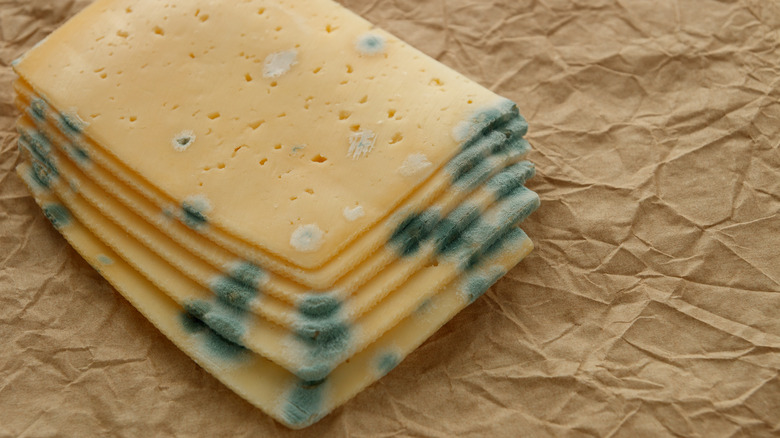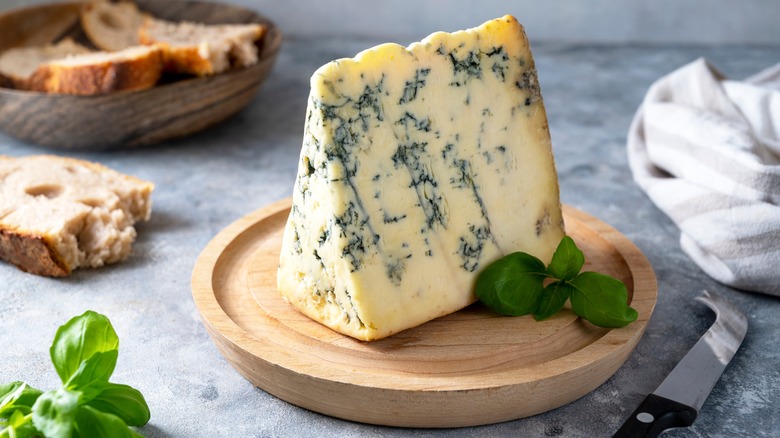Is It Safe To Eat Pre-Shredded Cheese If It Has Mold?
You're making a pizza at home, and it's time to add the cheese. You dig out the week-old bag of pre-shredded cheese from your refrigerator and get ready to scoop out a heap, but wait, what's that... greenish-blue mold? Unfortunately, this scenario is all too common.
Shredded cheese whether bought from a store or shredded at home has a shelf life that doesn't last very long. Unopened bags of shredded cheese may stay fresh for up to two weeks beyond their use-by dates but once opened, you only have about three to five days before the first signs of mold begin to appear. As tempting as it may be to weed out non-moldy shreds of cheese or worse yet, use the moody cheese as is (because isn't cheese made using mold anyway?), mold on pre-shredded cheese is not safe to eat.
According to registered dietitian Katherine Zeratsky, all shredded, crumbled, and sliced cheeses should be thrown out if they are moldy because the mold on these kinds of cheese goes far deeper than the eyes can see. Additionally, the mold on pre-shredded cheese often grows along with other bacteria like salmonella, listeria, and E.coli so unless you want a side of food poisoning with a slice of pizza, it's best to toss moldy pre-shredded cheese out.
There's good mold and bad mold
Granted, mold and cheese are a very volatile combination that can sometimes work for the better, and other times, lead to dangerous consequences. Certified cheese professional Rich Morillo told Bon Appetit that "in a lot of ways, cheese is mold" because it is mold that's responsible for transforming milk into crumbly blocks of parmesan, cheddar, and gorgonzola. In these cases, however, the mold is perfectly safe to eat but this doesn't mean that all mold that's found on cheese is good.
In reality, cheesemakers have expertise in ensuring that the mold used to make cheese is safe to consume. They carefully monitor its growth in the right environment, and more importantly, they make sure that the mold actually belongs in a particular cheese. So the mold that's growing in the back of your refrigerator unattended is probably not the kind that's safe to eat.
According to Katherin Zeratsky, in some cases, you could get away with eating moldy cheese. The mold on blocks of hard and semisoft cheese like Swiss and parmesan tends not to spread its roots too deep, and you can simply slice off the moldy part. In soft cheese like mozzarella and pre-shredded bags, however, the mold does tend to penetrate much further and grows along with other bacteria so if there are signs of mold, it's best to throw the whole batch away.

